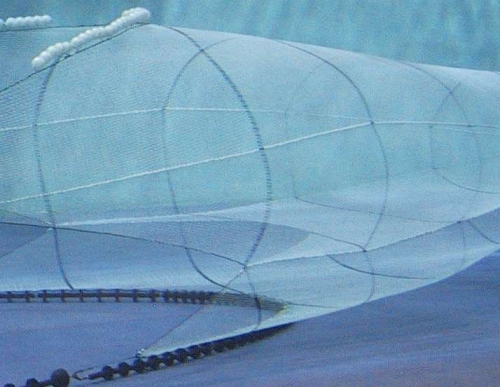
Concept and History of the Horizontal Separator Panel.
Most of the selective devices and gears have been designed and developed from fishermens ideas. This gives rise to the idea that not all fishermen try to circumvent the system, but in any regulation or legislative rules there are law breakers. To enforce these rules and regulations we have to monitor the users, as in your own case Fisheries Enforcement.
Nordsea Limited has been at the forefront of many of the developments in species selective gears and devices in the Canadian fishery. In fact we are the first gear company to market Horizontal Panels commercially.
Knowledge of fish behaviour is essential to the design of selective fishing gear and devices.
This information is usually gathered by using underwater cameras in the vicinity of fishing gear used in a real time environment.
Fishermen, and gear technologists, can then design fishing gear to target the desired species and release unwanted bycatch, or species on restricted quotas.
These include selectivity grids (shown here) which are now used in a variety of fisheries but mainly in the Shrimp and Silver Hake fisheries.
The device we will see today is the Horizontal Separator Panel as opposed to the Vertical Separator Panel. The first experiments with the Horizontal Separator Panels, as far as we know, were conducted in Scotland, where experiments with as much as three panels at different heights in the same trawl have been tried.
This Horizontal Separator Panel is designed to separate species and the use of this panel in Canadian Fisheries is based on the behaviour of two species, Cod and Haddock.
Using underwater cameras it has been observed that when haddock are entering a trawl they rise high and in many cases pass right over the headline of the trawl. Cod on the other hand have a tendency to keep low near the sea bottom. The horizontal separator panel takes advantage of this and the majority of Cod pass under the panel while Haddock rise over it.
The panel is designed so that the top codend retains all haddock, while the cod escape out of the lower codend which is left open.
The panel is normally attached to the fishing line by two or three strops which can be adjusted easily. The average strop length is set between two and three feet, but can differ according to the area and abundance of cod.
If the mesh size of the panel is large enough some migration of round fish from the lower area to the upper area may occur. However it is highly unlikely that species such as skate, monkfish, halibut, or any of the flatfish species are likely to do this. Any amounts of these species in the catch logs would indicate either of two scenarios.


